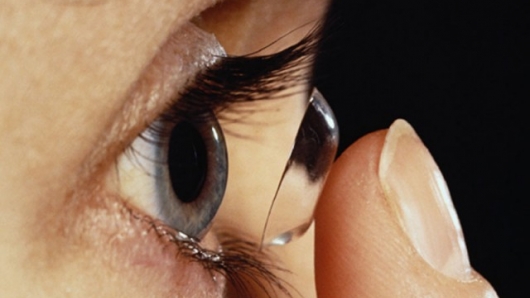 If you are tired of wearing thick, heavy eyeglasses or you just simply want to look better without glasses, you may opt to wear the best contact lenses you can find. With today's technology, there are many brands of contact lenses available and these may have both common and unique features, which are suitable for different users. Therefore, there is no single brand that is best for everyone, and you must find the contact lenses that fit your own needs perfectly. Most contact lenses sold in the United States are of the soft type. To choose the best one you must consider the following factors.
If you are tired of wearing thick, heavy eyeglasses or you just simply want to look better without glasses, you may opt to wear the best contact lenses you can find. With today's technology, there are many brands of contact lenses available and these may have both common and unique features, which are suitable for different users. Therefore, there is no single brand that is best for everyone, and you must find the contact lenses that fit your own needs perfectly. Most contact lenses sold in the United States are of the soft type. To choose the best one you must consider the following factors.
How to Choose the Best Contact Lenses
1. Base Curve
The surface of your eye or cornea is curved and your contact lenses must have approximately the same curvature to fit you well. This curve at the back of the lens is called the base curve, and when it conforms well to your cornea, you will have clear and undistorted vision. The lens surface will be uniform and smooth, giving you more eye comfort.
An eye care professional will recommend a contact lens brand with a suitable base curve for your eye shape during fitting. Most brands of contact lenses have common base curves, which fit the average cornea, but some people might need lenses with a flatter or steeper base curve, which are featured by certain brands only.
2. Lens Diameter
The contact lens diameter is important for comfort and centration. Depending on the shape of your eyes, you might need soft contact lenses with large diameter so they center properly on the cornea. People with smaller-than-average eyes generally need lenses with small diameter. This feature may also depend on the size of your eye opening or eyelid distance, and may need smaller-diameter contact lenses to make insertion and removal easier.
3. Power Range
Different brands of contact lenses feature various power ranges for nearsightedness (myopia) and farsightedness (hyperopia). If your eyes need strong correction, you may want to look for contact lenses with an extended power range.
4. Design for Astigmatism
Some people have a condition called astigmatism in addition to nearsightedness or farsightedness. This is an error of refraction that makes it difficult for people to focus their eyesight. You will need toric contact lenses, which are especially designed for astigmatism. The best contact lenses for this eye condition are designed to ensure alignment of toric powers and to minimize lens rotation when blinking or changing head position. However, there are other factors that will affect the best toric contact lenses for you such as your eye shape, eye opening, base curve, and lens diameter.
5. Surface Treatments
Lens surface treatments are sometimes a feature of some contact lenses brands. These features make the lenses stay moist for longer periods so that they feel more comfortable. People with dry eyes are often uncomfortable with their lenses after wearing them for a few hours and may need those with special surface treatments.
To get the best contact lenses suitable for you, visit an eye care professional for an eye exam and contact lens fitting. Except for a few cases when you will need to try a few brands, proper evaluation will lead you to get the best brand that will suit your needs.
